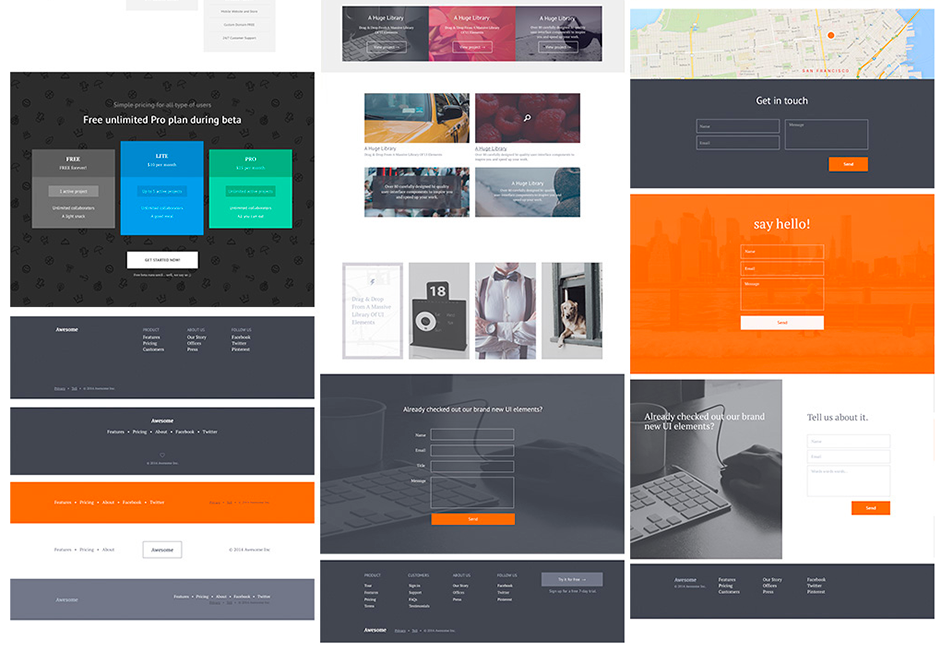In 2009 and 2010, social media went mainstream. Companies, products, and nonprofits rushed to establish presences on Facebook, Twitter, and media repositories such as Flickr and YouTube. If they already had blogs, the streams of bite-size messages on Twitter and Facebook gave those blogs new audiences.
Organizations discovered that if they published a steady stream of appealing content, customers and influencers would pay attention to
them—and if a piece of content “went viral,” that organization’s brand would spread far and wide. For free!Well, not really for free.
Organizations put in a lot of effort to establish successful social media presences. Someone has to spend a lot of time writing and disseminating content; someone else needs to spend time reading relevant conversations across the Web and responding sensitively to them.
Valuable home page real estate may support these social media efforts, and pages on other sites (such as Facebook or YouTube) must be designed and tended. And someone needs to devise an overall strategy: where is effort spent, when, and on what topics?
A few best practices are emerging that can inform those efforts. Social media is still a young field, and specific recommendations will change rapidly over the months and years. Like the rest of this book, this chapter’s principles and patterns aren’t hard-and-fast rules, though ideally they will outlast 2010’s most popular sites and technologies.
This chapter will focus on one aspect of online social interaction: how to use the various forms of social media to promote a brand, share an idea, disseminate a video or other Ar-tistic expression, and otherwise support your particular enterprise. The key is to acquire followers—people who voluntarily listen to what you have to say. Brands that create excel- lent experiences for their followers gain huge audiences from their social media efforts.
(Here, we will keep the scope of this blog to include “brands” that are personal, nonprofit, arts-based, cause-driven, or just for fun.)
The Basics of Social Media:
Listen:- listen what are people thinking about your subject. find out what they want and what they don't.
Produce good stuff:- Write, design, record, or otherwise create items that people enjoy consuming. Produce them regularly and frequently enough to keep people interested
Push that good stuff out to readers:-
Go to wherever they spend their time: email, Facebook, Twitter, RSS feeds, Digg, or wherever you discover your readers are hanging out online.
Let readers decide which stuff is good:-
Give readers a way to share your content with their own followers, and let readers send items privately to close ties. Gather feedback via voting systems, thumbs-up/down gadgets, and other systems.
Make the good stuff findable:-
Organize your home page well; put fresh content there regularly, and use sidebars to show most-viewed items, best-of lists, and other views into your library of content items.
Consider using the following patterns for social content production:
1. Editorial Mix
2. Personal Voices
3. Repost and Comment
4. Conversation Starters
5. Inverted Nano-pyramid
Organizations discovered that if they published a steady stream of appealing content, customers and influencers would pay attention to
them—and if a piece of content “went viral,” that organization’s brand would spread far and wide. For free!Well, not really for free.
Organizations put in a lot of effort to establish successful social media presences. Someone has to spend a lot of time writing and disseminating content; someone else needs to spend time reading relevant conversations across the Web and responding sensitively to them.
Valuable home page real estate may support these social media efforts, and pages on other sites (such as Facebook or YouTube) must be designed and tended. And someone needs to devise an overall strategy: where is effort spent, when, and on what topics?
A few best practices are emerging that can inform those efforts. Social media is still a young field, and specific recommendations will change rapidly over the months and years. Like the rest of this book, this chapter’s principles and patterns aren’t hard-and-fast rules, though ideally they will outlast 2010’s most popular sites and technologies.
This chapter will focus on one aspect of online social interaction: how to use the various forms of social media to promote a brand, share an idea, disseminate a video or other Ar-tistic expression, and otherwise support your particular enterprise. The key is to acquire followers—people who voluntarily listen to what you have to say. Brands that create excel- lent experiences for their followers gain huge audiences from their social media efforts.
(Here, we will keep the scope of this blog to include “brands” that are personal, nonprofit, arts-based, cause-driven, or just for fun.)
The Basics of Social Media:
Listen:- listen what are people thinking about your subject. find out what they want and what they don't.
Produce good stuff:- Write, design, record, or otherwise create items that people enjoy consuming. Produce them regularly and frequently enough to keep people interested
Push that good stuff out to readers:-
Go to wherever they spend their time: email, Facebook, Twitter, RSS feeds, Digg, or wherever you discover your readers are hanging out online.
Let readers decide which stuff is good:-
Give readers a way to share your content with their own followers, and let readers send items privately to close ties. Gather feedback via voting systems, thumbs-up/down gadgets, and other systems.
Make the good stuff findable:-
Organize your home page well; put fresh content there regularly, and use sidebars to show most-viewed items, best-of lists, and other views into your library of content items.
Consider using the following patterns for social content production:
1. Editorial Mix
2. Personal Voices
3. Repost and Comment
4. Conversation Starters
5. Inverted Nano-pyramid















